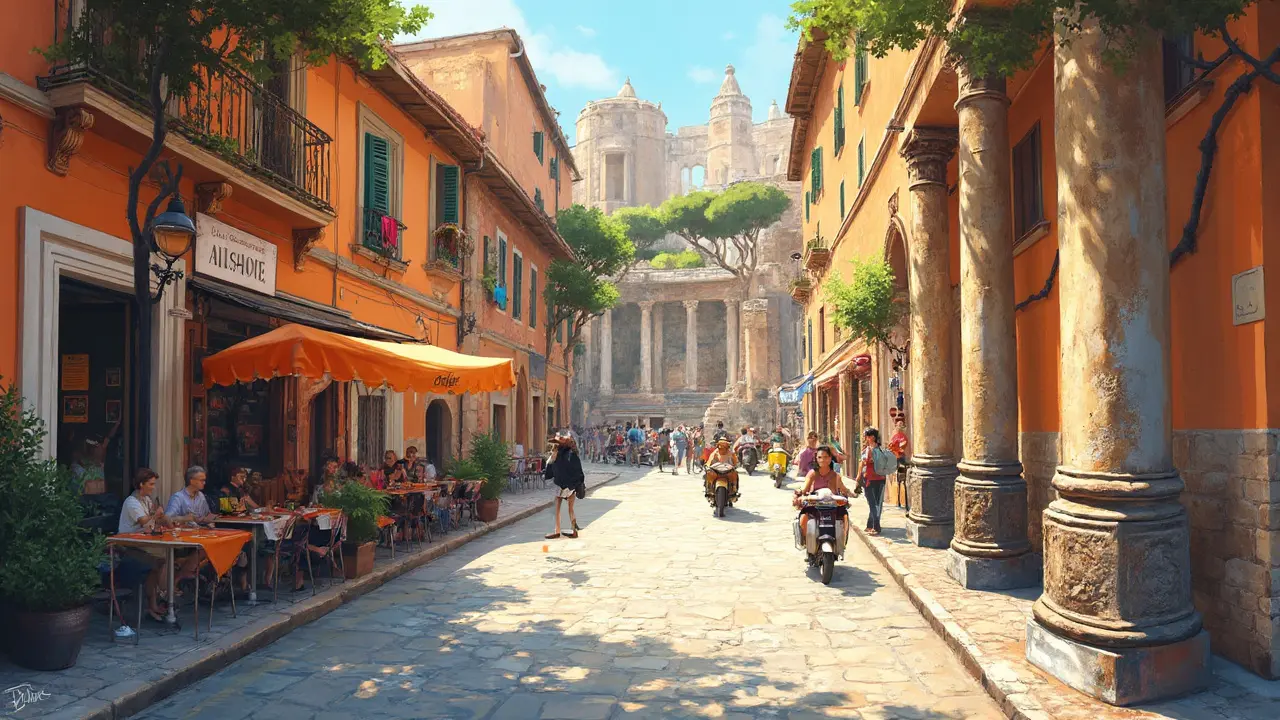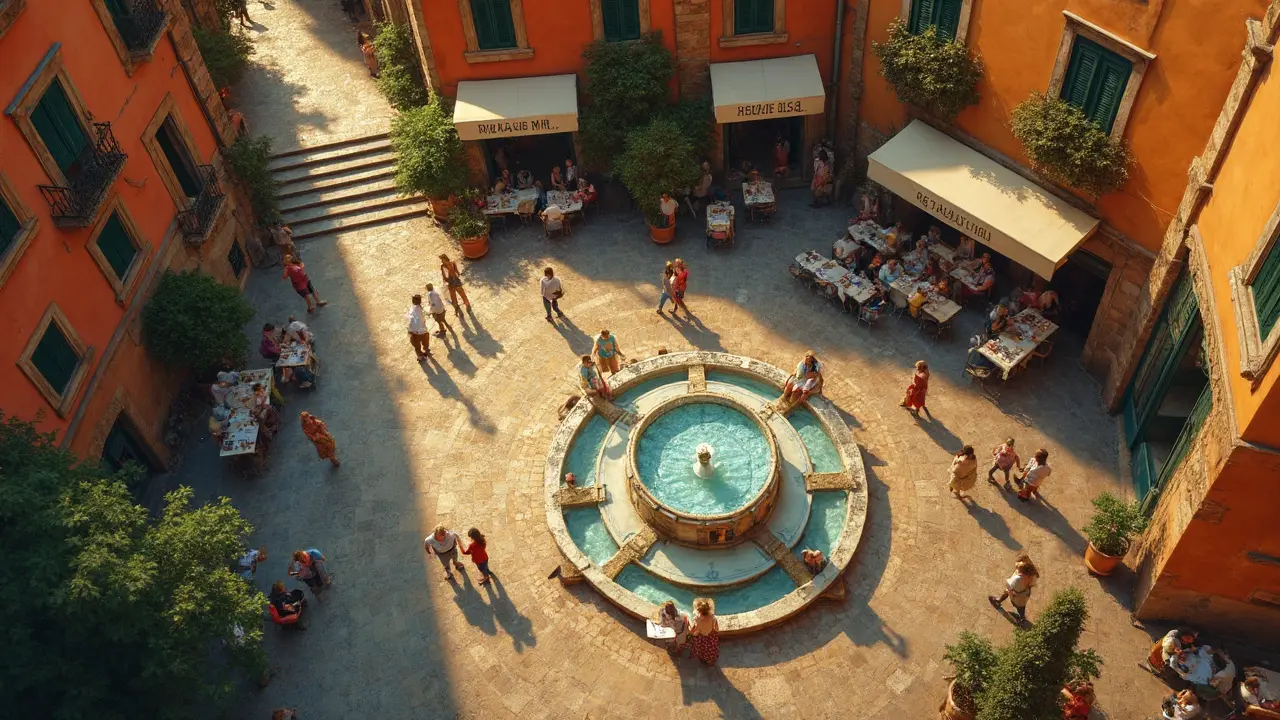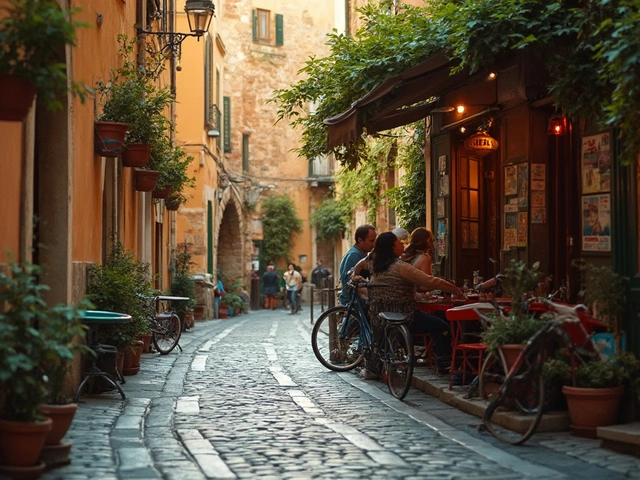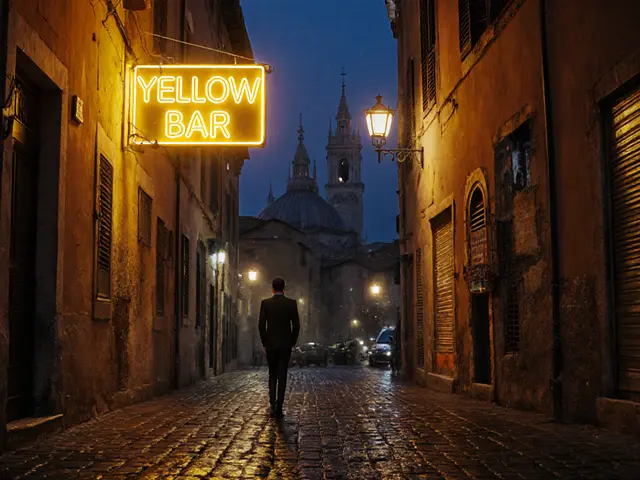
Get lost in Rome and you’ll find more than guided tours could ever show you. Most folks think you have to follow the crowds to the Colosseum, snap a selfie at the Trevi Fountain, and call it a day. But if that’s your plan, you’ll mostly remember waiting in line and dodging selfie sticks.
The best parts? They’re hiding in plain sight—old cafés buzzing just around the corner from ancient ruins, quick bites that beat any souvenir, and back alleys where it feels like the city’s watching you rather than the other way around. You don’t need a complicated itinerary, but you do need a local’s common sense and a little curiosity.
This guide gives you the real deal. You’ll figure out how to hit the big sights without the usual stress, sneak into spots locals love, eat food that actually deserves the hype, and pick up solid tips most travel books miss. Start with the classics if you want—but stay for everything else.
- See the Classics (Without the Hassle)
- Dig Into the Real Roman Neighborhoods
- Eat Like You Actually Live Here
- Smart Tips for Making the Most of Rome
See the Classics (Without the Hassle)
You can’t skip the big sights in Rome—but you can outsmart the crowds. The Colosseum, Roman Forum, and Vatican Museums are magnets for tourists, and waiting times can stretch into hours if you show up unprepared. Here’s how to do it right.
- Book your tickets online for the Colosseum, Vatican Museums, and Galleria Borghese. Not only do you avoid long lines, but picking an early morning slot can mean cooler temps and fewer people.
- For the Pantheon, weekends are packed and there’s now an entry fee (introduced in July 2023). Head there before 10 a.m. on weekdays if you want elbow room.
- St. Peter’s Basilica is free, but the line for security can get wild. Arrive before 8 a.m. or after 5 p.m. for the fastest entry. Wednesdays are trickier—if the Pope’s holding his weekly audience, the whole square gets blocked off until at least noon.
- Want an alternative view? Check out the Aventine Keyhole. You don’t get inside, but lining up early gets you a unique photo through the keyhole with St. Peter’s perfectly framed.
Check out this quick rundown on when it’s busiest—and least crowded—at the main attractions:
| Attraction | Busiest Hours | Least Crowded | Skip-the-Line Option? |
|---|---|---|---|
| Colosseum | 10am-3pm | 8:30am-10am | Yes |
| Vatican Museums | 11am-2pm | 8:30am-10am | Yes |
| Pantheon | 12pm-4pm | 8:30am-10am | No, but online ticket required |
| St. Peter’s Basilica | 9am-12pm | 7am-8:30am | No, but early arrival helps |
Avoid “free first Sundays” at state museums if you hate lines. Admission’s free, but so are the crowds. On Mondays, many museums (except the Colosseum and Vatican) are closed, so plan accordingly.
Keep your knees and shoulders covered at churches—security’s tight. And don’t bother waiting for the Spanish Steps: climb up, grab a photo, and walk on toward the quieter Pincio Terrace for a killer city view. It’s all about seeing the highlights, then ducking into the side streets where Rome is at its best.
Dig Into the Real Roman Neighborhoods
If you want to get a feel for the real Rome, skip the main roads and wander into local neighborhoods. Each district has its own personality, quirks, and plenty of daily life that you just won’t see sticking to the tourist trail. Here’s where you can actually blend in and spot locals arguing over football or sharing espresso at the bar.
Rome is more than ruins—it’s neighborhoods like Trastevere, Testaccio, and Pigneto where the city breathes. Trastevere is packed with narrow lanes and vine-strangled buildings, but it’s not just for Instagram meets. Walk through in the morning and you’ll hear real Roman accents and the clatter of café cups. Testaccio is the spot for foodies—this area is known for its old slaughterhouse (now a creative space) and the best market for ordering a slab of pizza bianca. Pigneto is Rome’s answer to hipster culture: street art, indie bars, and not a gladiator costume in sight.
- Trastevere: Head here in the evening for aperitivo. Get lost on tiny streets and look for places like Bar San Calisto, which sells coffee for €1 and doesn’t care if you’re famous or broke. Local students pile in for cheap beers by the church steps.
- Testaccio: Walk through Mercato Testaccio before noon. Grab a market sandwich or try the stand famous for fried artichokes. Don’t leave without swinging by the ancient Pyramid of Cestius—it’s right by Rome’s protestant cemetery where famous poets are buried.
- Pigneto: Evenings here have a gritty, electric feel; if you’re tired of tourist menus, this is the address. Try Necci dal 1924, a cafe that once hosted movie stars, for an unbeatable slice of torta. The graffiti here is basically a living museum.
Curious about how much time locals spend in their neighborhoods compared to the overcrowded center? Here’s a quick look:
| Neighborhood | Local Population (%) | Main Activities |
|---|---|---|
| Trastevere | 75% | Nightlife, small shops, street food |
| Testaccio | 82% | Markets, food joints, art spaces |
| Pigneto | 68% | Cafes, art, nightlife |
| Historic Center | 21% | Tourism, government |
If you’re into photography, these neighborhoods will deliver. Narrow alleyways and gritty bars in Pigneto, the washed orange walls of Trastevere at sunset, or the mural-covered markets in Testaccio—all perfect for candid shots. Just remember: mornings and early afternoons are when you’ll see locals in action. Evenings get busier, but you’ll feel the social buzz that keeps Rome’s neighborhoods alive.

Eat Like You Actually Live Here
Roman food isn’t about fancy dining rooms or mile-long menus. Most people here keep it simple: tight menus, killer flavors, and unbeatable prices (if you know where to look). If you want the real deal, you skip chain pizza spots near major sights and go for the tiny neighborhood joints where old chefs still argue over the best way to cook carbonara.
Let’s break down the must-try dishes. In Rome, pasta stars: cacio e pepe (cheese and black pepper), amatriciana (tomato, pork cheek, and pecorino), and the never-gets-old carbonara (egg yolk, guanciale, pecorino, no cream ever). For a fast bite, try supplì—fried rice balls with gooey mozzarella. These show up in almost every Rome street food spot, and locals grab them between errands or after work.
When it comes to where to eat, some names pop up again and again: Pizzarium (best pizza al taglio—sold by weight, not slice), Roscioli (killer deli classics and pasta), and Trattoria Pennestri (modern Roman classics, but not expensive). Most good spots open late—8 p.m. is normal for dinner. If you show up early, grab an aperitivo: a spritz and small snacks at a bar before you eat.
It’s not just about the pasta, though. Breakfast is quick—coffee standing at the counter and maybe a mini pastry. Most Romans avoid anything big or elaborate in the morning. And don’t even think about ordering a cappuccino after noon—baristas will straight-up judge you.
Need proof the food scene is a big deal? Rome has hundreds of gelato shops, but only a few stand out. Check for crowded spots where flavors look dull, not neon-bright. That’s where you’ll get the real stuff—like at Gelateria del Teatro or Fatamorgana.
| Item | Average Price |
|---|---|
| Espresso at bar | €1.20 |
| Trattoria lunch (pasta + drink) | €15-18 |
| Supplì (street food) | €2 |
| Pizza al taglio (per 200g) | €4-5 |
| Gelato (small cup) | €2.50-3 |
Watch your step: plenty of places near busy landmarks serve overpriced, meh food. If the menu tries to lure you in with lots of languages or giant photos, walk the other way. Get a table where you hear mostly Italian, and you’re set. That’s how you eat like you live here, not like a tourist.
Smart Tips for Making the Most of Rome
Rome looks like chaos on the surface, but there’s a rhythm if you know where to look. Want to make your trip smoother and less stressful? Here’s what works for folks who actually live here, not just guidebook writers.
- Timing is everything: Hit big sights like the Vatican Museums and the Colosseum either super early or late in the afternoon. Midday means hour-long lines and wall-to-wall crowds. The Vatican opens at 8 AM—get there by 7:30 if you want to move fast. Colosseum gets slammed by school groups; dodge them by booking the last entry slot.
- Skip-the-line tickets matter: They’re legit. Buy official tickets online (especially for the Colosseum and Vatican). Tour groups scoop up the best slots—don’t get stuck buying overpriced passes from street hawkers.
- Carry cash: Many cafes and tiny shops still say “cash only.” ATMs can charge up to 4 EUR per withdrawal, so try to take out enough for the day at once.
- Use public transport smartly: The Metro is fast but only covers some of the city. Buses run everywhere but the stops aren’t always clear. Get a 24-hour or 48-hour transport pass (called BIT or Roma 24H). You can buy them at metro stations or tobacco shops.
- Stay hydrated—Rome has ancient water fountains (nasoni) all over town. The water’s clean and cold, even in summer. Bring a small bottle and fill up for free.
- Pace yourself: Don’t plan to see everything. Rome’s best moments are usually when you slow down—have an espresso at the bar, watch street life from a bench, or just wander into a church you’ve never heard of.
Sometimes the little things trip folks up, so here’s a quick cheat sheet:
| Tip | What to Watch Out For |
|---|---|
| Sunday Closures | Most shops (except restaurants and gelato spots) close on Sundays—plan grocery runs or shopping sprees for Saturdays. |
| Dress Codes | Shorts or sleeveless shirts won’t get you into St. Peter’s Basilica or most major churches. Always keep a scarf or light cover-up in your day bag. |
| Pickpockets | Crowded Metro lines, especially Line A and B, are prime targets. Keep your bag in front and don’t get distracted. |
| Restaurant Hours | Don’t show up for dinner before 7:30 PM unless you’re fine with eating alone. Romans eat late. |
The bottom line—don’t sweat the small stuff, but be ready so the bumps don’t throw off your trip. Rome rewards people who can go with the flow and follow a local’s lead. Your memories will be way better if you leave a little room for surprise.



